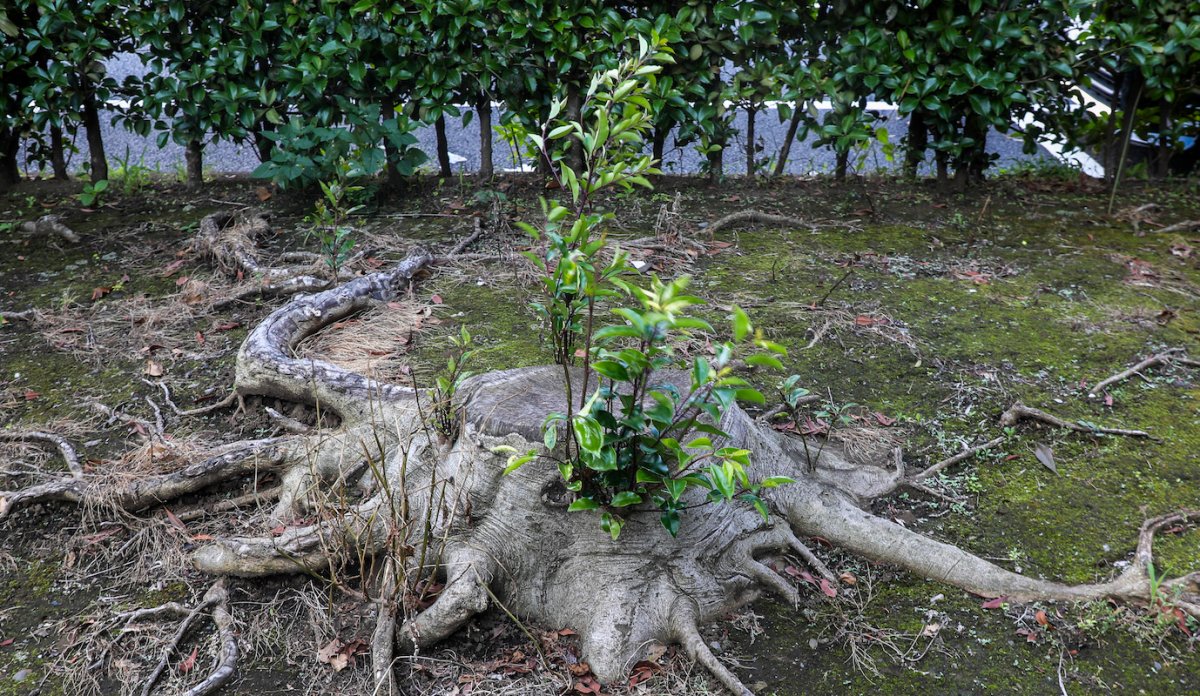

We may earn revenue from the products available on this page and participate in affiliate programs. Learn More ›
Trees add great beauty to your landscape and their shade can help keep cooling costs low. But when a tree outgrows its location or is seriously damaged in a storm, it becomes a hazard that should be removed, and chopping it down is only half the battle.
A tree’s underground root system can extend up to 20 feet deep in ideal soil conditions, and spread over an even greater area. The roots can continue to grow even after the trunk is gone; if they’re too close to your sewer line or foundation, they can cause serious damage. Killing the roots can avoid potential problems down the road.
One common way to kill tree roots is one that the BobVila.com staff does not support: using the chemical herbicide glyphosate, the active ingredient in RoundUp, on the roots and tree stump. We never recommend the use of this herbicide. Instead, we urge readers to seek out more environmentally solutions to lawn and garden problems.
How to Kill Tree Roots Using Rock Salt
Although it takes long time to work, rock salt can effectively kill tree roots by robbing them of water.
TOOLS AND MATERIALS
Rock salt
Water
Drill with a 1-inch or larger drill bit
Step 1: Drill holes into the tree’s trunk and roots.
Bore several holes 3 to 4 inches deep into the cut surface of the tree trunk. Make several additional holes into any larger roots that are exposed near the ground.

Tried-and-True Advice
“When we bought our house the front yard had one beautiful tree and one stump. After removing the stump there were still quite a few roots, so we took an unconventional approach: We built up a fire pit [over the roots], and for two years we had bonfires there. After two years, between the fire and the natural decomposition process, it was easy to just lift out the remaining dead roots and repair the lawn. I live in Minnesota where bonfires are permitted on the front lawn so it wasn’t an issue.”
—Amber Guetebier, Contributing Writer
Step 2: Fill the holes with rock salt and water.
Sprinkle rock salt into the holes you’ve bored, and then pour water into the holes. The rock salt solution is harmful to surrounding vegetation and toxic to pets, so take care to avoid overfilling the holes. Repeat this process several times over the course of a few months, and eventually the rock salt will kill the tree roots. (You’ll know the roots are dead when there is no longer any regrowth from the trunk.)
If you are worried that the roots have invaded a sewer line or your foundation, you can also try digging the larger tree roots out of the ground. It’s an arduous process, but once you remove them you can reclaim your lawn.
